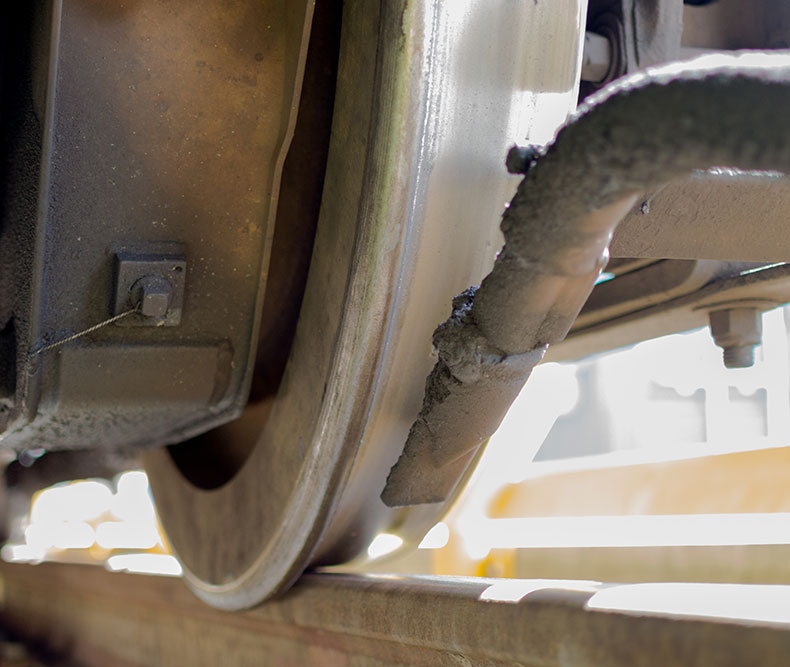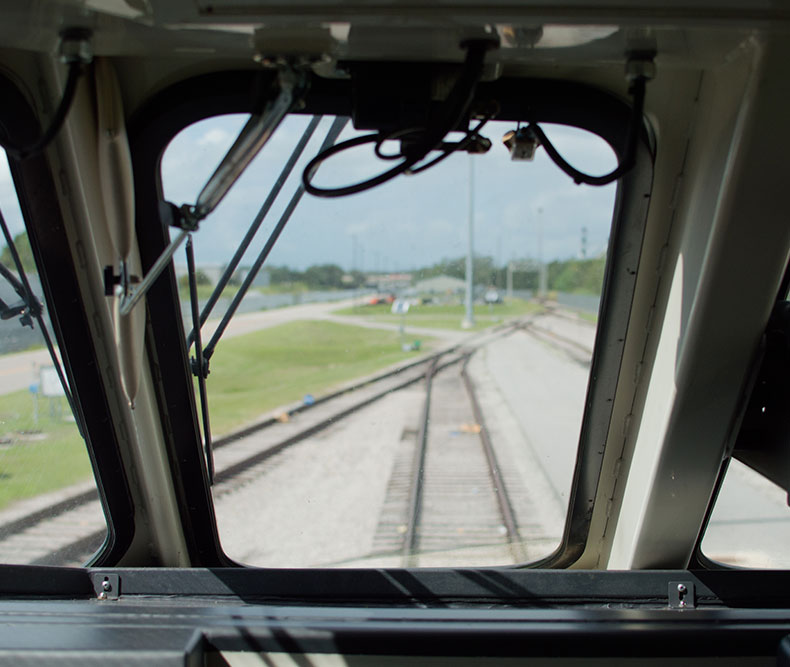
Doppler Effect
Have you ever noticed a train sounds quicker and louder as it gets closer to you then lower and slower after it passes? The sound of the train isn’t changing at all but you are experiencing what is known as the Doppler effect. Sound travels in waves and the frequency of those waves gets higher as the train gets closer and they get lower as they train passes and moves away. This phenomenon was discovered in 1842 by Austrian physicist Christian Doppler. This trick on the ears is just one more reason why you should stay off and away from tracks. You can never tell just how fast and how close they are relying on their sound.
View LessonPositive Train Control
Positive Train Control is just that – positive! It’s a safety system designed to monitor and control train movement. By connecting Global Positioning Systems (GPS), radio communications, trackside interfacing units, back office servers and a dispatch control system, the train and crews receive vital information about when, where and at what speed to travel. With freight companies, Amtrak and SunRail traveling on the same tracks, it is very important that everyone is talking to each other. There are also people who working on the tracks, maybe replacing a crossing bar at a railroad crossing, and PTC will help to keep them safe while they are working. The Federal Railroad Administration now requires that all train systems have PTC and SunRail will have their systems in place late 2018.
View Infographic
That Sounds Sand-Tastic!
Steel wheels are great for trains because they create the least amount of friction between the wheel and the track. Less friction means less fuel. Sounds great, right? But if we don’t have friction, how do we move?
In front of each wheel is a small nozzle that sprays sand between the wheel and the track, creating just the right amount of grab so the wheels can turn without slipping. The sand is automatically sprayed based on the speed and braking needs of the locomotive.
View ProjectEngineer’s Point of View
The view from the engineer’s locomotive control area is very different than what we see outside the train. The locomotive is nearly 16’ high. To help you picture it, that’s almost as tall a giraffe! From that height, the engineer can see down the track however, just as when you are sitting in a car, seeing immediately in front of the vehicle is a mathematical impossibility. If there is something on the tracks ahead such as a vehicle, the engineer can go into emergency stop however a train traveling 60mph covers 88 feet per second and can take more than a mile to stop. There are many factors that go into calculating stopping distance such as speed, weight of the equipment, weight of the load, grade or level of the tracks and more. The lesson here is – keep off and away from tracks!
Inattentional blindness
Inattentional blindness is a person’s inability to see something in their direct point of view because they are distracted by something else. This is quite common when people are on their phones, wearing earbuds or watching tv. Our brains are working furiously to collect all of the information around us coming through the five senses of sight, sound, touch, smell and taste that when we are in “the zone” of something like a phone, we can lose touch with obvious things around us. This is incredibly dangerous near train tracks as people may be too distracted to notice a train is approaching before it’s too late. Avoid distractions near tracks and always be aware of your surroundings knowing a train can approach from either direction at any time.




